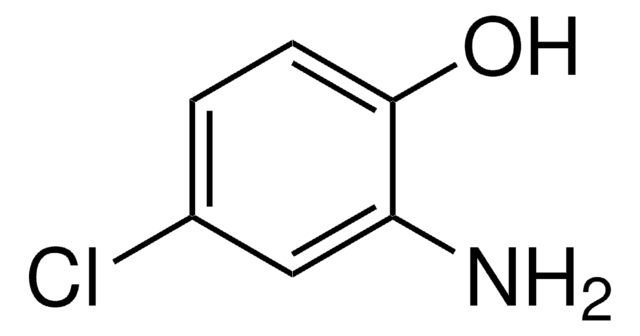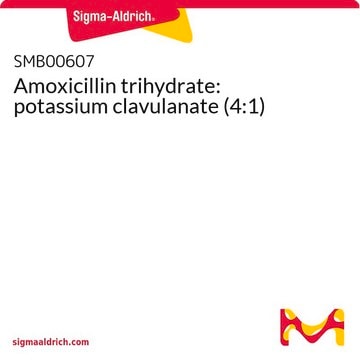C4397
Chlorzoxazone
Sinónimos:
5-Chloro-2(3H)-benzoxazolone, 5-Chloro-2-hydroxybenzoxazole
About This Item
Productos recomendados
Ensayo
≥98% (TLC)
Nivel de calidad
Formulario
powder
color
white to off-white
mp
191-192 °C (lit.)
solubilidad
DMSO: 50 mg/mL, clear
emisor
Johnson & Johnson
temp. de almacenamiento
room temp
cadena SMILES
Clc1ccc2OC(=O)Nc2c1
InChI
1S/C7H4ClNO2/c8-4-1-2-6-5(3-4)9-7(10)11-6/h1-3H,(H,9,10)
Clave InChI
TZFWDZFKRBELIQ-UHFFFAOYSA-N
Información sobre el gen
human ... KCNN4(3783)
¿Está buscando productos similares? Visita Guía de comparación de productos
Aplicación
- as a calcium-activated potassium (KCa) channel activator in patch-clamp electrophysiology to test its effect on dendritic hyperexcitability
- as a substrate for cytochrome P450 2E1 (CYP2E1) enzyme in cultured human hepatocytes
- as a benzimidazolone compound to test its effect on epithelial sodium (Na+) transport
Acciones bioquímicas o fisiológicas
Características y beneficios
Palabra de señalización
Warning
Frases de peligro
Consejos de prudencia
Clasificaciones de peligro
Acute Tox. 4 Oral - Eye Irrit. 2 - Skin Irrit. 2 - STOT SE 3
Órganos de actuación
Respiratory system
Código de clase de almacenamiento
11 - Combustible Solids
Clase de riesgo para el agua (WGK)
WGK 3
Punto de inflamabilidad (°F)
Not applicable
Punto de inflamabilidad (°C)
Not applicable
Equipo de protección personal
dust mask type N95 (US), Eyeshields, Gloves
Elija entre una de las versiones más recientes:
¿Ya tiene este producto?
Encuentre la documentación para los productos que ha comprado recientemente en la Biblioteca de documentos.
Los clientes también vieron
Artículos
Discover Bioactive Small Molecules for ADME/Tox
Discover Bioactive Small Molecules for ADME/Tox
Discover Bioactive Small Molecules for ADME/Tox
Discover Bioactive Small Molecules for ADME/Tox
Nuestro equipo de científicos tiene experiencia en todas las áreas de investigación: Ciencias de la vida, Ciencia de los materiales, Síntesis química, Cromatografía, Analítica y muchas otras.
Póngase en contacto con el Servicio técnico















